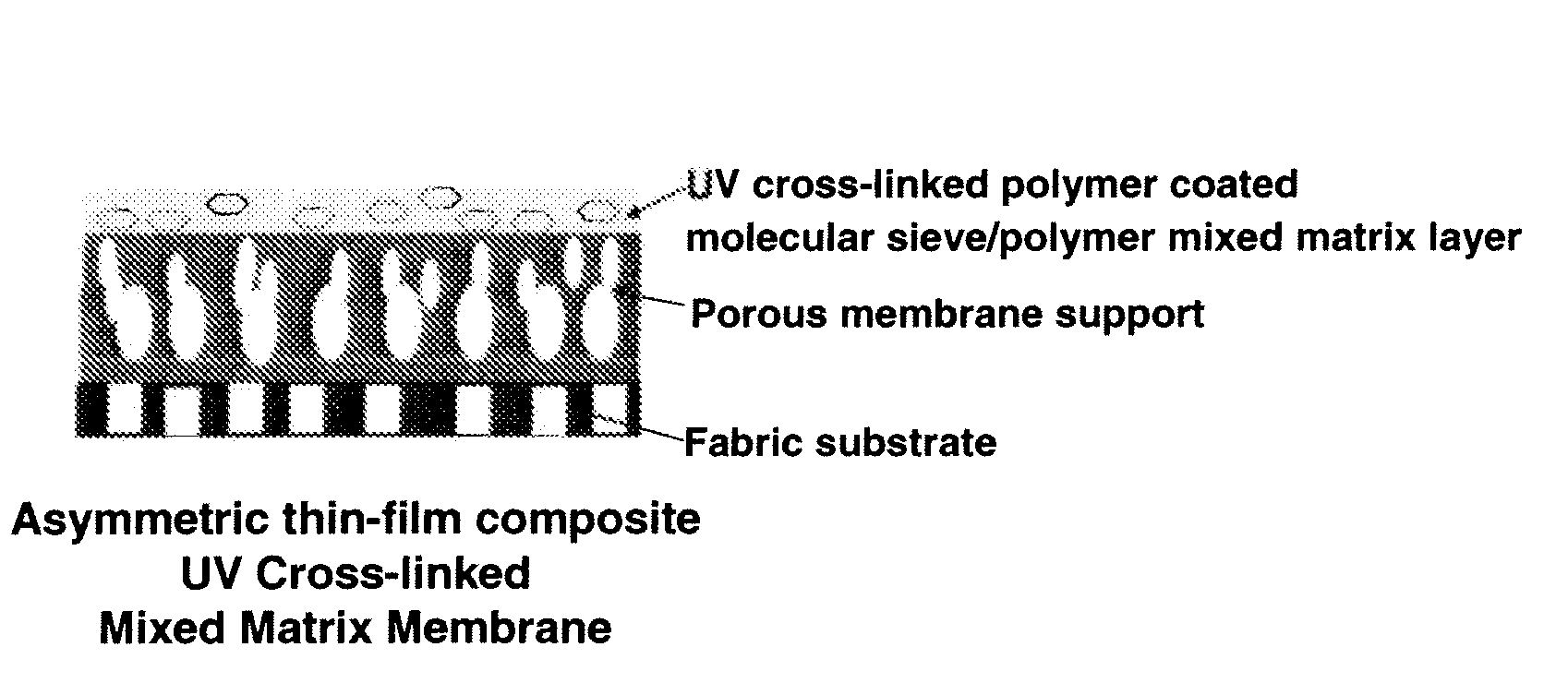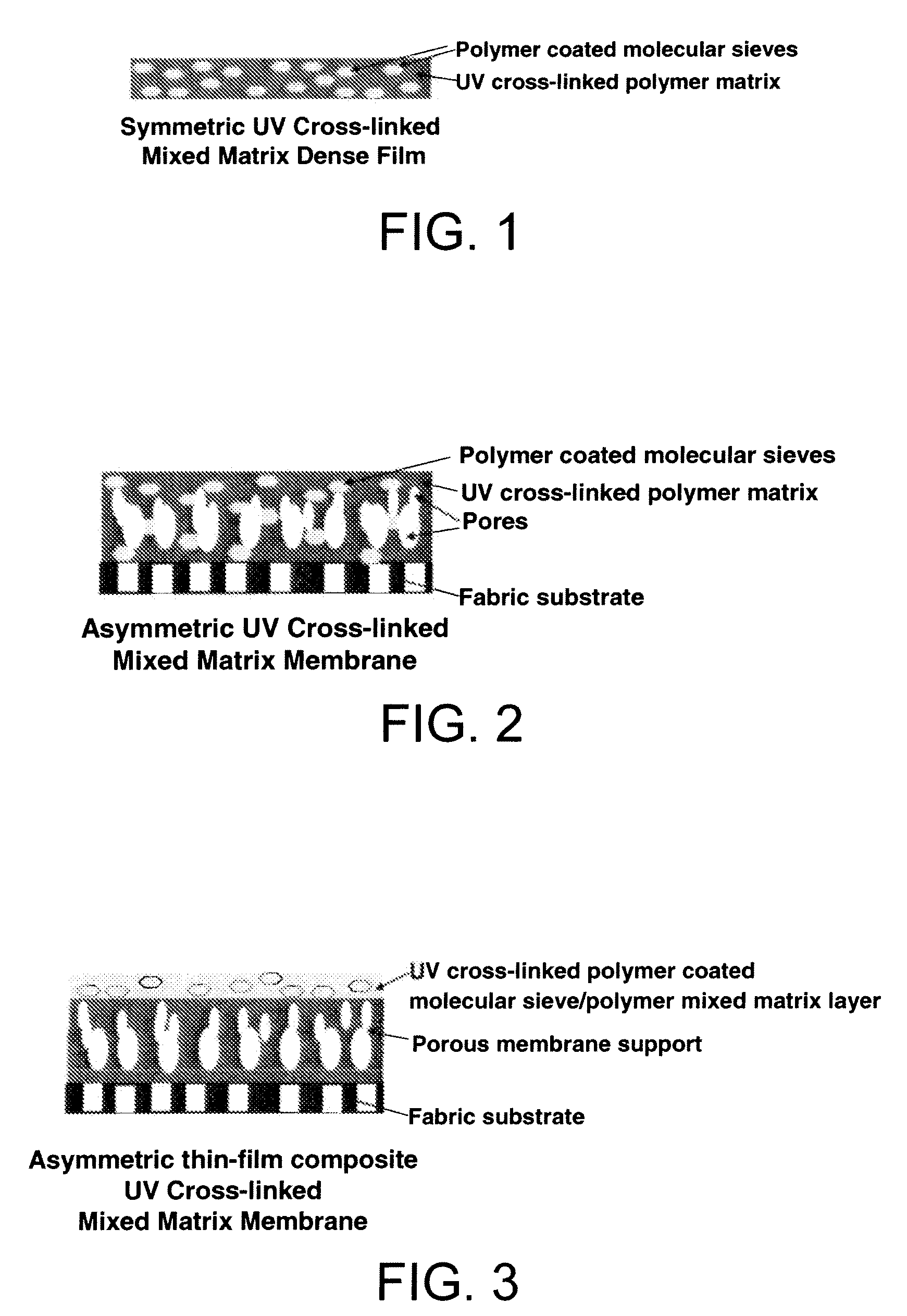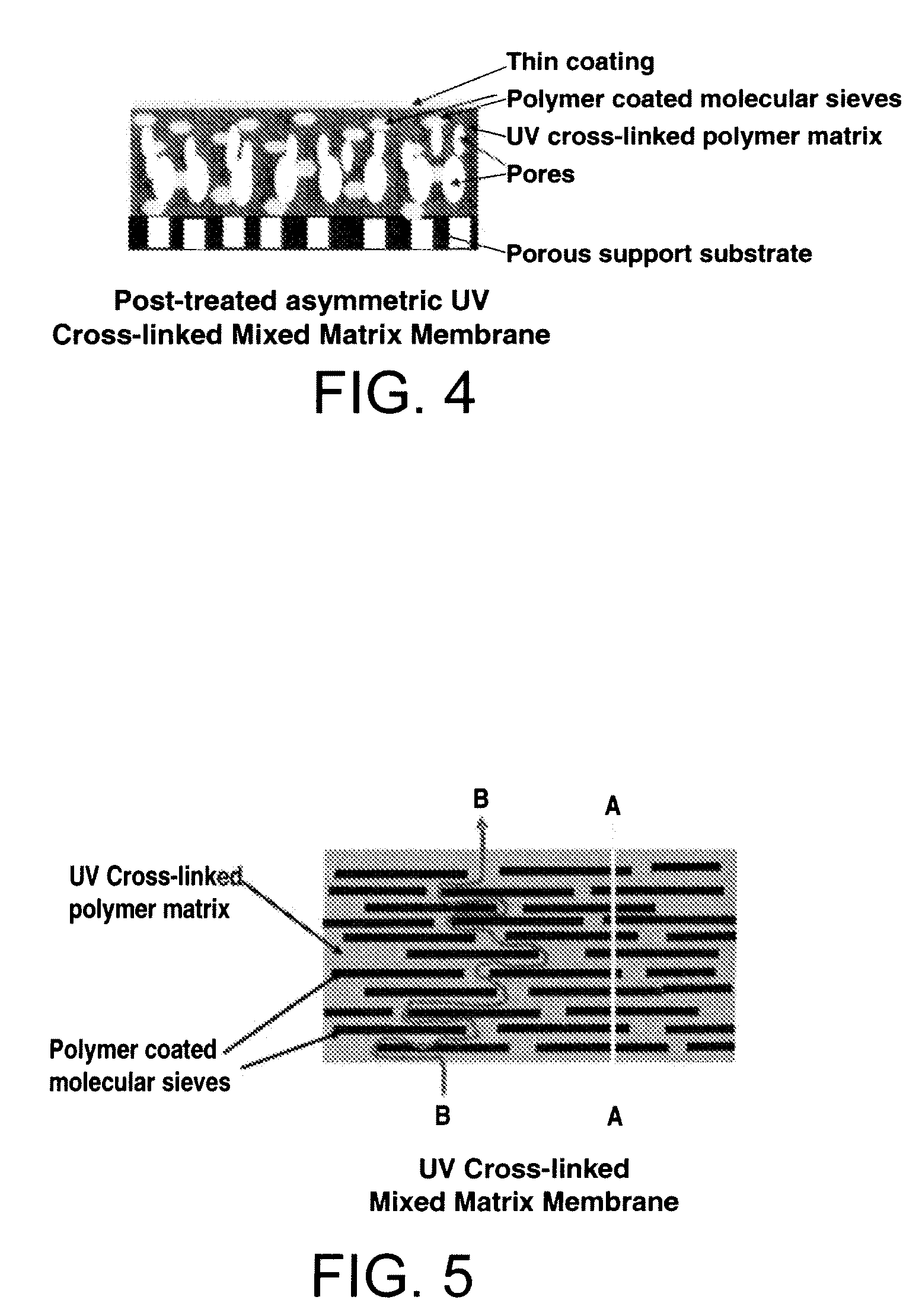UV cross-linked polymer functionalized molecular sieve/polymer mixed matrix membranes
a functionalized molecular sieve and polymer technology, applied in membrane technology, membranes, chemistry apparatus and processes, etc., can solve the problems of inability to meet the requirements of large-scale manufacturing, etc., to achieve the effect of improving the overall separation efficiency of uv cross-linkable mmms, increasing the overall separation efficiency, and reducing the cost of production
- Summary
- Abstract
- Description
- Claims
- Application Information
AI Technical Summary
Benefits of technology
Problems solved by technology
Method used
Image
Examples
example 1
Preparation of poly(DSDA-PMDA-TMMDA)-PES Polymer Membrane (Abbreviated as P1)
[0077]5.4 g of poly(DSDA-PMDA-TMMDA) polyimide polymer (FIG. 9) and 0.6 g of polyethersulfone (PES) were dissolved in a certain amount of an organic solvent or a mixture of several organic solvents (e.g. a solvent mixture of NMP, acetone, and 1,3-dioxolane) by mechanical stirring to form a homogeneous casting dope. The resulting homogeneous casting dope was allowed to degas overnight. A poly(DSDA-PMDA-TMMDA) polymer membrane was prepared from the bubble free casting dope on a clean glass plate using a doctor knife with a 20-mil gap. The film together with the glass plate was then put into a vacuum oven. The solvents were removed by slowly increasing the vacuum and the temperature of the vacuum oven. Finally, the membrane was dried at 200° C. under vacuum for at least 48 hours to completely remove the residual solvents to form P1 polymer membrane as described in Tables 1 and 2, and FIGS. 11 and 12.
example 2
Preparation of UV Cross-Linked poly(DSDA-PMDA-TMMDA)-PES Polymer Membrane (Abbreviated as Control 1)
[0078]The Control 1 polymer membrane as described in Tables 1 and 2, and FIGS. 11 and 12 was prepared by further UV cross-linking P1 polymer membrane by exposure to UV radiation using 254 nm wavelength UV light generated from a UV lamp with 1.9 cm (0.75 inch) distance from the membrane surface to the UV lamp and a radiation time of 10 min at 50° C. The UV lamp described here is a low pressure, mercury arc immersion UV quartz 12 watt lamp with 12 watt power supply from Ace Glass Incorporated.
example 3
Preparation of UV Cross-Linked 30% AlPO-14 / PES / poly(DSDA-PMDA-TMMDA) Mixed Matrix Membrane (Abbreviated as MMM 1)
[0079]UV cross-linked polyethersulfone (PES) functionalized AlPO-14 / poly(DSDA-PMDA-TMMDA) mixed matrix membrane (abbreviated as MMM 1) containing 30 wt-% of dispersed AlPO-14 molecular sieve fillers in UV cross-linked poly(DSDA-PMDA-TMMDA) polyimide continuous matrix was prepared as follows:
[0080]1.8 g of AlPO-14 molecular sieves were dispersed in a mixture of NMP and 1,3-dioxolane by mechanical stirring and ultrasonication for 1 hour to form a slurry. Then 0.6 g of PES was added to functionalize AlPO-14 molecular sieves in the slurry. The slurry was stirred for at least 1 hour to completely dissolve PES polymer and functionalize the surface of AlPO-14. After that, 5.6 g of poly(DSDA-PMDA-TMMDA) polyimide polymer was added to the slurry and the resulting mixture was stirred for another 2 hours to form a stable casting dope containing 30 wt-% of dispersed PES functionalize...
PUM
| Property | Measurement | Unit |
|---|---|---|
| Lattice constant | aaaaa | aaaaa |
| Fraction | aaaaa | aaaaa |
| Fraction | aaaaa | aaaaa |
Abstract
Description
Claims
Application Information
 Login to View More
Login to View More - R&D
- Intellectual Property
- Life Sciences
- Materials
- Tech Scout
- Unparalleled Data Quality
- Higher Quality Content
- 60% Fewer Hallucinations
Browse by: Latest US Patents, China's latest patents, Technical Efficacy Thesaurus, Application Domain, Technology Topic, Popular Technical Reports.
© 2025 PatSnap. All rights reserved.Legal|Privacy policy|Modern Slavery Act Transparency Statement|Sitemap|About US| Contact US: help@patsnap.com



